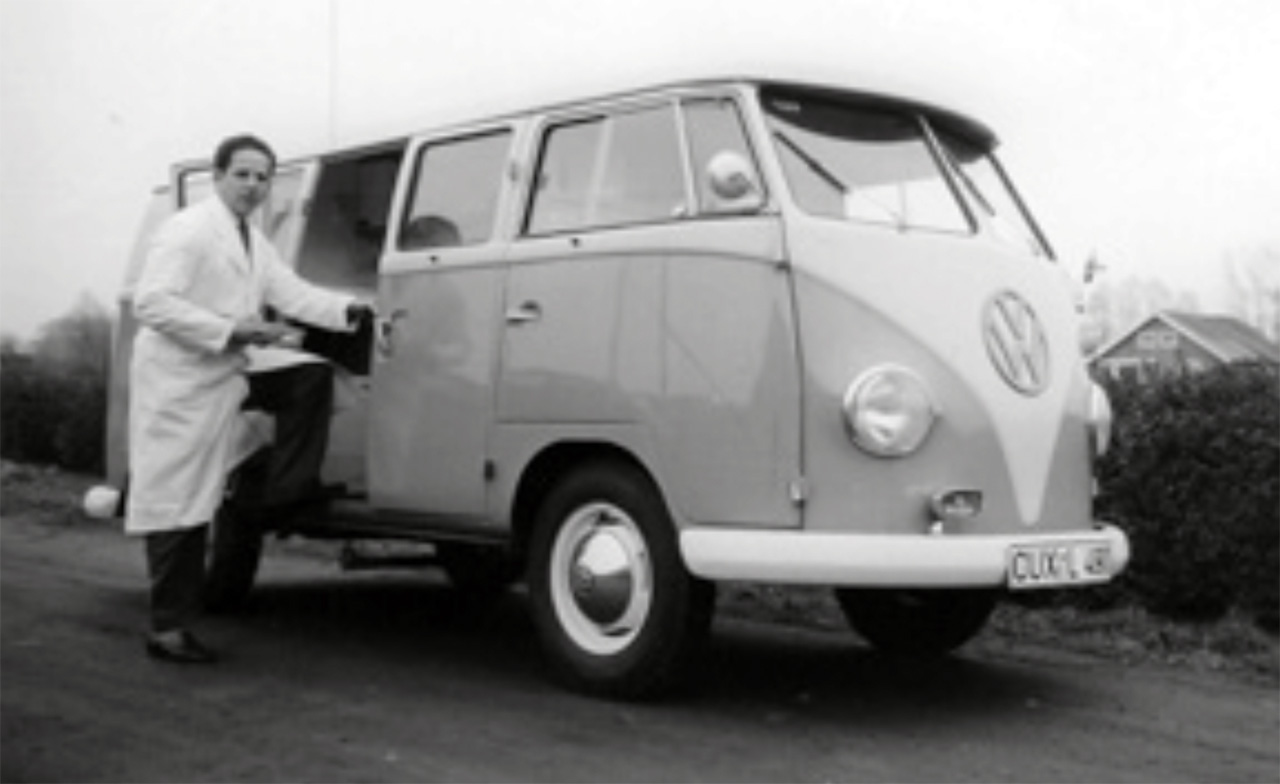In 1959 the company LOHMANN & Co KG in Cuxhaven had established a poultry laboratory including a post mortem room and was looking for veterinarians for the care of poultry farms. Mr. Lohmann had already gained large experience in the feed sector and had employed nutritionists for the various food producing species. The laboratory was located in the old industrial area of Cuxhaven in Northern Germany. So I entered the company.
Heinz Lohmann – a pioneer of the German poultry industry
Heinz Lohmann recognized in the late 50s that American chicken breeds yielded more meat and laid double the number of eggs in comparison with the European races. When the chickens were imported to Germany they showed the same performance in Europe. Mr. Lohmann made license agreements with Heisdorf Nelson for layers and Nichols for the meet type chickens. That was the breakthrough and Heinz Lohmann was henceforth regarded as a pioneer of the German poultry industry.

Cuxhaven full of veterinarians
In 1962 I became director of the LOHMANN Veterinary Laboratory. My team consisted of Dr. Helga Landgraf and another two veterinarians. Heinz Lohmann followed the general desire that in Cuxhaven veterinarians should be trained. This happened in the years 1963-64. In addition according to his principle “come and see” he invited many guests.
No chickens – no plagues?
Already in the early 1960ies we experienced the first epidemic poultry diseases i.e. avian encephalomyelitis and severe outbreaks of Newcastle disease. Heinz Lohmann ordered that all farmers were to be fully compensated for their AE-losses. This measure created tremendous trust in the company LOHMANN. The Newcastle disease however nearly brought him to close his chicken business. “No chickens, no plagues”.
Importance of immunoprophylaxis
Fortunately Dr. Hitchner had discovered a vaccine virus (Hitchner B1) for mass application against Newcastle Disease and the problem came to a standstill. This event had convinced Heinz Lohmann and us of the importance of immunoprophylaxis in particular the use of live vaccines in chickens. In the course of the following years intensifying the farming of chickens increased the infectious pressure in flocks. To be named are Marek’s Disease, Infectious Bronchitis, Infectious Laryngotracheitis, Reovirus, Chicken Anemia Virus, Infectious Bursal Disease and Salmonella. All of these diseases could be controlled by the development of attenuated live vaccines over a period of ca. 30 years.

Marek’s Disease vaccine
One of the most important vaccines introduced by LOHMANN in the early 70ies was the Marek’s Disease vaccine based on HVT as discovered by Dr. R. Witter (East Lansing). For months LOHMANN was the only company in Central Europe, which offered this vaccine. The sales of the HVT vaccine enabled the company to build a modern veterinary laboratory.
Modern Veterinary Laboratory
In 1966 new chicken houses with FAPP (filtered air positive pressure) were built for the maintenance of large SPF-stock. The name of this particular animal husbandry became “VALO”, of Vaccine LOHMANN. In addition Mycoplasma infections that caused great losses especially in broilers were eliminated by egg-injection techniques using various antibiotics (1969). In the early 70ies Heinz Lohmann started to develop dementia and the business was then taken over by his sons. He died in 1975.
Dr. Egon Vielitz










